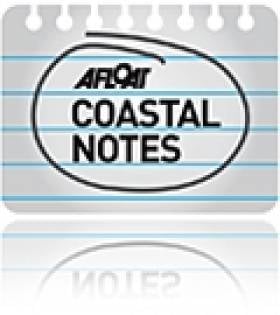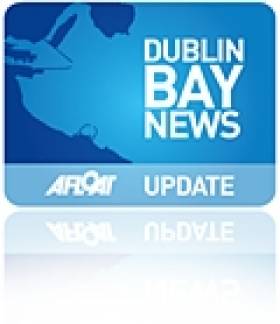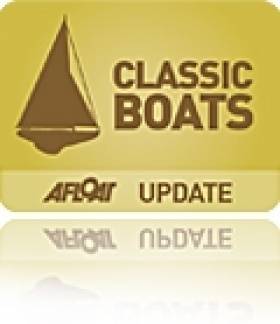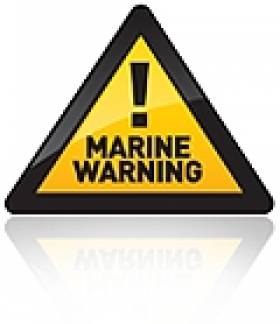Displaying items by tag: swimming
Ireland's Bathing Spots Among Cleanest in Europe
Ireland has ranked fifth in a new Europe-wide report on bathing water quality - but some beaches in Northern Ireland are falling short of strict EU standards.
MEP Jim Higgins welcomed the results of the annual Bathing Water Report for 2010, saying: "Ireland's scenic attributes are a primary reason for attracting tourists and it is essential that our coastal and inland bathing sites are also enticing."
Ireland has moved up five places from its overall rank of 10th in 2009, with 90.1% of all bathing water sites meeting the EU's Blue Flag guidelines for water quality at beaches and swimming spots.
However, the Daily Telegraph reports that a number of beaches in Northern Ireland and other parts of the UK were judged to be 'poor'.
Beaches at Newcastle and Ballyholme in the North are among 16 across the UK that did not pass the EU's strict checks for Blue Flags.
The 2010 report ranks Cyprus as the cleanest bathing spot in Europe, with 100% of sites passing EU insspection. It was closely followed by Croatia with 97.3%, Malta at 95.4% and Greece at 94.2%.
53 Degrees North Store Opens at Western Marine
53 Degrees North, Ireland's Outdoor Adventure Stores with branches already at Carrickmines and Blanchardstown - caters to Climbing, Hillwalking, Biking, Camping, Hiking, and of course watersports including Kayaking, Sailing, Surfing and Swimming.
Western Marine, Ireland's Largest Marine Distributors, was established in 1966 and is based at Bulloch Harbour since 1968. Western Marine caters to all marine markets, from sailing and motorboating to commercial workboats, and specialises in inflatable boats and RIBs as well as a huge range of marine equipment, lifesaving equipment etc.
Commenting on the new store, Western Marine's MD, Hogan Magee said "We're very enthusiastic about this venture - 53 Degrees North carry a full range of clothing, footwear and equipment from value for money through to top end premium quality products and that fits very well with our own philosophy of providing of premium quality at affordable prices.
The two ranges are complimentary, with very little product overlap, and the result is a truly comprehensive watersports display that we think is unparalleled anywhere in Ireland".
53 Degrees North MD Alan McFarlane said "We're really excited about this. Western Marine has a superb reputation in all marine markets, and the combination of the Western Marine and 53 Degrees North brands will give us both a wonderful opportunity to grow our businesses.The huge range of watersports gear which we offer now has a waterside home, and a whole new customer base. With free car parking spaces available in the adjacent boatyard, shopping with 53 Degrees North at Western Marine could not be easier"
Among the huge range of brands now available under one roof are worldwide leaders including Zodiac inflatable boats and RIBs, Teleflex steerings and engine controls, Skipper and Besto lifejackets & buoyancy aids, Icom VHFs, Gleistein yacht ropes, McMurdo EPIRBs, Harken, Lewmar, Garmin GPS, Pains Wessex Flares, Musto, Helly-Hansen and Henri-Lloyd sailing clothing, Dubarry marine footwear, O'Neill wetsuits, Oakley eyewear, surfboards by Cortez, and kayaks by Islander and Wilderness.
The new store is open 7 days a week throughout the Summer, with opening hours 9am to 6pm Monday through Saturday, and 1pm to 6pm on Sunday
Dun Laoghaire Baths Plans to be Displayed
New plans for the Dun Laoghaire Baths are due to be displayed shortly in County Hall.
Proposals for the project, which is estimated to cost up to €21 million, include the retention and refurbishment of the existing baths pavilion to provide access to swimming and a paddling pool for children.
Also planned is a new structure behind the pavilion with toilet and changing facilities, storage lockers, and a café and restaurant.
Facilities for thalassotherapy (sea water therapy) are also being mooted, as is a proposal to cover the DART line to provide a new forecourt to the People's Park.
For more information visit www.dlrcoco.ie.
Sailing Determined to 'Stand on Podium' in 2012
Irish sailing bosses are determined to "stand on the podium" at the 2012 Olympic Games.
That was the message from last week's briefing by Ireland's four Olympic 'water sports' of canoeing, rowing, swimming and sailing, covered in The Irish Times.
For next summer the Irish Sailing Association has narrowed its focus on three boat classes - the Star Class, 49er and Laser Radial.
But the competition will be tough, with more than 40 countries vying for a handful of remaining Olympic spots at the Perth Sailing World Championships in December.
Other sports are more modest in their aspirations, with rowing rebuilding from the ground up with younger athletes, and Swim Ireland pushing forward with a streamlined team and plans to have six swimmers compete in London next summer.
In canoeing, Eoin Rheinisch - who placed fourth in the canoe slalom in Beijing - was on hand to discuss his qualification hopes, with two chances to clinch a spot between now and the games.
The Irish Times has more on the story HERE.
Irish Water Safety Launches TV Campaign
Irish Water Safety (IWS) has launched a new TV awareness campaign to highlight best practice whether in, on or around water in an effort to cut the number of tragic drownings on our coasts and waterways.
"Ireland is blessed with some of the most beautiful locations in the world for water based activities and this campaign will help people enjoy these waterways safely," said Minister of State Fergus O'Dowd, speaking ahead of the launch.
The number of people taking to water based activities has exploded in the last decade, says IWS, yet many have had no formal swimming or lifesaving instruction, and many do not know what to do if they or a loved one gets into difficulty in the water.
The campaign highlights the importance of aquiring these skills and others, such as how to correctly wear a lifejacket.
"The most common dangers can be avoided by logging onto Irish Water Safety's website so that when the improving weather prompts a day trip to the seaside, rivers and lakes that you are well informed and stay safe," added Minister O'Dowd.
Unique footage of 1926 Dun Laoghaire Regatta Uncovered
Here's a unique glimpse of a post World War One Dun Laoghaire Regatta in rare newsreel recently archived by British Pathe (below). The shots taken on August 2nd 1926 show a mixture of long shots of yachts sailing across Dublin bay. There's definitely lovely shots of Dublin Bay 21s enjoying a tight race, a brave gybe by a Dublin Bay 25 at the harbour mouth plus shots of some Howth 17s.
There's panning shots of in harbour rowing races and high angled shots of men diving off the side of a boat and into the harbour. The swimmers race the length of an area cordoned off by rowing boats with spectators watching from the boats. There is also a shot of women's swimming race and some diving too.
We'd like your observations on these shots, particularly any details of the large committee boat dresssed overall. Leave your comments below. Enjoy.
Scroll down for the clip.
Swimming Pool Safety Guidelines will improve public safety
Irish Water Safety in partnership with Swim Ireland and ILAM have produced "Swimming Pool Safety Guidelines", to be launched by Minister Michael Finneran at 11am on Wednesday 28th April 2010 at Dublin City Council's Markievicz Leisure Centre, Townsend St, Dublin 2.
The Guidelines will alert leisure centres and swimming pools nationwide to steps that they can take to reduce the potential for injuries associated with pools. Although swimming pools offer a greater level of safety, the risk of an accident or drowning is ever present. This risk is all the more prevalent with the upsurge in the number of leisure centres and pools opening in Ireland and the number of adults and children visiting these venues.
"The most serious hazard is of course drowning", commented Minister Finneran. "Although members of the public have a duty of care for themselves and those within their charge when visiting these pools, this updated resource offers aquatic accident and drowning prevention guidelines that will equip Swimming Pool Managers and Lifeguards to ensure that their standards meet the most current best practices."
A SAFE POOL ENVIRONMENT MEANS CAREFULLY FOLLOWING SAFETY GUIDELINES
In addition to exercising caution and good sense, swimming pool centres must take all steps necessary to ensure public safety. IWS, in consultation with ILAM and Swim Ireland has produced these guidelines for the benefit of public and private swimming pools and leisure centres alike.
"The publication will provide the leisure sector with guidelines and procedures that encompass rules of best practice that will help swimming pools to plan for the unexpected incident where seconds can make a difference", added Minister Finneran.
There are guidelines on structural considerations, risk assessments and lifeguarding that take into account the conditions particular to individual pools. There are considerations for the pool operators, the pool users and the pool employees and particular considerations with regard to child protection.
Irish Water Safety is the statutory body established to promote water safety in Ireland. Their role is to educate people in water safety best practices. They develop public awareness campaigns to promote necessary attitudes, rescue skills and behaviour to prevent drownings and water related accidents. Activities include:
Teaching swimming and lifesaving courses to children and adults. Recipients build skills in swimming, water confidence, safety, survival, rescue skills and resuscitation. Participants can progress to qualify as Pool and Beach Lifeguards, there are 27 qualifications that are internationally recognized and are available to children and adults nationwide.
Lectures and demonstrations to members of the Public and other interested parties.
Publishing literature to promote water safety and target at-risk groups. Popular posters include safe boating, safe swimming, and lifejacket posters. A Cold shock/hypothermia leaflet is also available as are many other publications.
Volunteers carry out Risk Assessments on all Bathing Areas nationwide, free of charge in order to make them safer by the erection of ring buoys, signage and other necessary action. The Local Authorities are most helpful in this regard.
Advise and assist Local Authorities on all matters relating to water safety.
The Nation’s Beach Lifeguards are tested by IWS examiners for the local authorities, free of charge prior to the annual summer season.
A programme exists in which National School teachers are coached in teaching water safety principles to their pupils.
Training all the boats crews for the Inshore Rescue Boat Service nationwide. The IWS also train and examine the Coast Guard Inshore Rescue Boats crews.
Promoting water safety along with other members of the Marine Safety Working Group and the Irish Marine Search and Rescue Committee.
National and local media actively communicates IWS safety messages to the public.
Issuing advice on all aspects of water safety. Press Releases are available all year round, which target the seasonal hazards on Irish waterways.
Organising the Annual National Lifesaving Championships; some members thn go on to compete in international events each year.
Awarding the ‘Just in Time’ Rescue Award to rescuers nationwide; other awards recognise work promoting Water Safety in Ireland.
The IWS develop a partnership approach with private sponsors to deliver safety messages to the public.
Providers of information on the locations of Lifeguarded beaches in Ireland.
History of Irish Water Safety
Before 1945, life-guarding was confined to a few counties in Ireland – that is, in Wexford, Waterford, Cork, Dublin and Clare. Indeed, the teaching of swimming and water safety as we know it was done on an ad hoc basis around the country, but mostly in the cities of Dublin and Cork where indoor swimming pools were available. It was only when a member of An Garda Síochána, Mr Harry Gillespie (who was Chairman of a small Water Safety Committee in County Clare) decided to approach the Irish Red Cross Society in May 1945 that Water Safety was established in Ireland on a formal basis.
Under the auspices of the Irish Red Cross Society, local Area Water Safety Committees were established in all of the counties of Ireland. Naturally, there was very little expertise in this country in the matter of water safety and swimming rescue, so it was decided that the American Red Cross should be approached as they had an excellent Water Safety Service running in the USA for many years. From them came the necessary approach to teaching water safety, then generally known as swimming rescue. Their booklets were also used as the basis for the first water safety manuals published by the Irish Red Cross Society (Water Safety Service).
It is worthy of note that several present members are recipients of the ‘Service Medal of Honour’ being founding members of the Water Safety Organisation in Ireland. For twenty-six years, Water Safety operated under the auspices of the Irish Red Cross Society and it was during this period that the structure of Examiners, Instructors and other voluntary (non-technical) personnel was established. During those early days, there were few indoor swimming pools in this country for the teaching of swimming and lifesaving. Much of the work was done during the Summer months at piers, quays, beaches, on riverbanks, and at lake sides. It was also during those first twenty-six years that we saw the increase in the use of lifeguards around the coast of Ireland during the summer. It must be remembered that few people could swim and fewer still could swim and save a life. Indeed, in many of the coastal towns and villages, particularly where their livelihood was derived from the sea, there was an old superstition, that it was better not to learn how to swim as it only prolonged the agony in the water when in difficulty.
Change was slow due to a lack of resources, but voluntary commitment was strong among the members, as it is to day. With time, improvements followed and a more conscious awareness of water safety began to unfold throughout the country, particularly as the seventies approached and the work of the Water Safety Service expand to every county throughout the country. The leading light at that time was a man called Plunkett Walsh, an employee of the Irish Red Cross Society with special responsibility for Water Safety. His great enthusiasm was an inspiration to all involved in the Water Safety Service to promote water safety awareness. However, his untimely and sudden death left a great void within the organisation.
Following this, in 1971 an approach was made to the Minister of Local Government who agreed to the establishment of the Irish Water Safety Association under the auspices of the Department of Local Government. This move was universally welcomed, albeit tinged with certain sadness on leaving the Irish Red Cross, with whom water safety had been for twenty-five years. The first Chairman of the Irish Water Safety Association was Mr Desmond Kenny who was from Galway.
With the establishment of the Irish Water Safety Association came an upsurge in membership, to meet the growing demand for swimming and lifesaving instruction throughout the country. In turn, this demand led to the construction of many indoor swimming pools and improved bathing facilities in many parts of Ireland. Shortly after the establishment of the Irish Water Safety Association, it was invited to join both Federation International De Sauvetage and World Life Saving, both international bodies dealing with water safety and rescue.
In 1987, a Government decision was made resulting in the IWSA being amalgamated with fire and road safety under the auspices of the National Safety Council. The members continued to give exceptional time and effort on a voluntary basis to ensure that swimming and lifesaving was taught nationwide and Water Safety went from strength to strength and the number of voluntary members involved continued to grow. Certificates issued for swimming and lifesaving increased annually, and the ‘Water Safety Awareness’ campaign was promulgated nationwide. With the encouragement of the National Safety Council, water safety personnel played an active role in the formation of the new International Life Saving Federation, which was established in 1994.
1995 was the 50th anniversary of the formation of Water Safety under the auspices of the Irish Red Cross, the Irish Water Safety Association and the National Safety Council. To mark this occasion, a suitable medal was struck to honour those who had given long and valued service throughout those fifty years. In November 1996 at a meeting of the Board of the National Safety Council, it was agreed that Water Safety be known as Water Safety Ireland. In the National Budget of 1998, it was announced that the Government had set a side the necessary finance to re-establish Water Safety as a singular organisation. The effect of this decision being that Water Safety was to leave the National Safety Council. The decision to establish Water Safety as the Irish Water Safety Association with its Headquarters in Galway took effect in November 1999. A Council of 12 persons was appointed with Mr Frank Nolan (a retired member of An Garda Siochana) being appointed as Chairman. The functions of the new body are similar to those that have been traditionally carried out over the past fifty-five years.
The new Association, which is the Statutory Water Safety Body for Ireland, is financed by Government, Local Authorities, fund-raising and sponsorship. The Association continues to be actively involved with International Life Saving (the world body) and co-operates with the other national organisations involved in water safety and rescue.
On the 25th August 2000, in front of a large audience, Minister of State, Mr Robert Molloy, TD, opened the new Headquarters of Irish Water Safety close to the Spanish Arch in Galway City. Irish Water Safety is governed by the Council, which is appointed by the Government for three years, supported by a full-time permanent staff. The functions of the Association are supported nationwide on a voluntary basis through 28 area Water Safety Committees and two special Committees (one within the Irish Police Force and the other within the Defence Forces). Persons who give exceptional Service over 25 to 50 years receive the ‘Medal of Honour with Bar’. Persons outside the Association, who have been supportive of Irish Water Safety over a number of years, can be honoured with a Life Governorship of the Association. Ten persons so far have been conferred with this honour.
The Irish Water Safety Motto: 'Every Person a Swimmer and Every Swimmer a Lifesaver'
Irish Water Safety (IWS), The Long Walk, Galway. Tel: 1890 420202, Fax: 091 564700, Email: [email protected]
Other IWS Afloat posts here:




































































